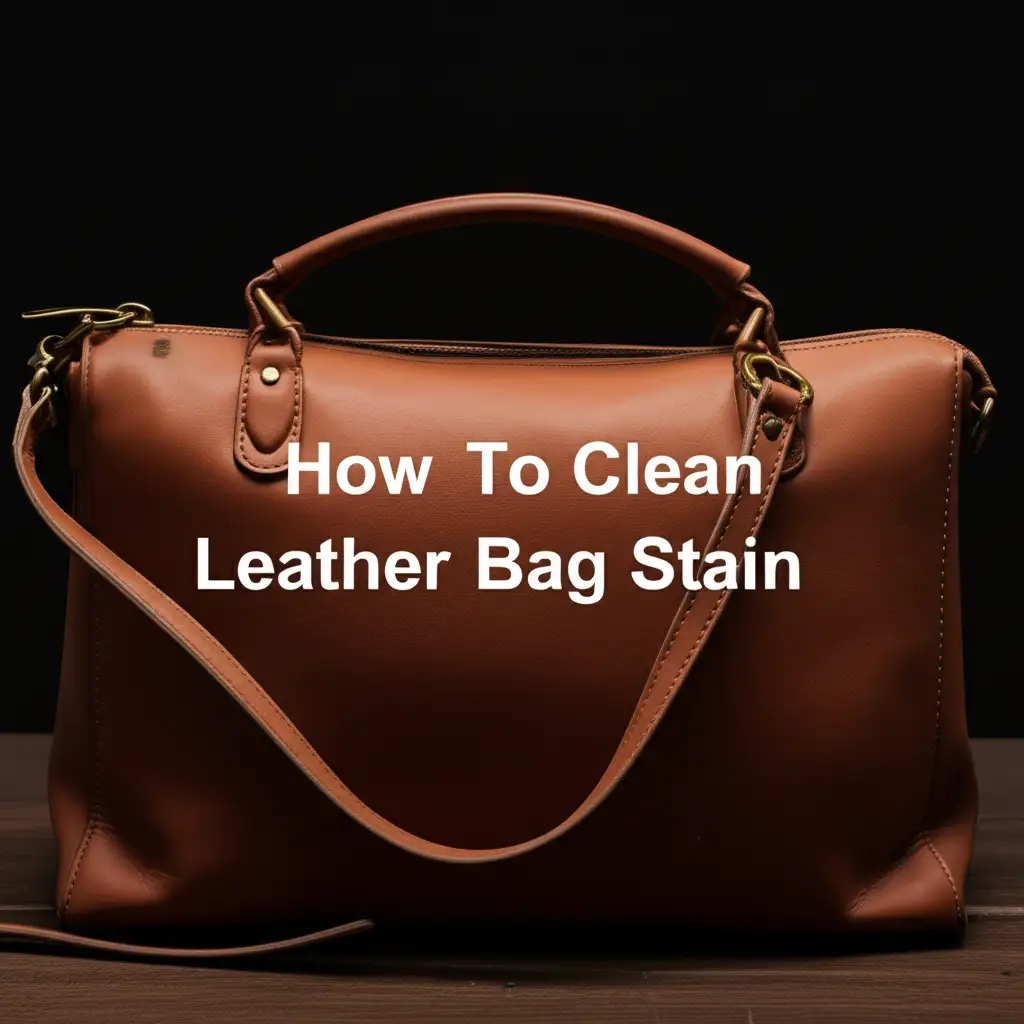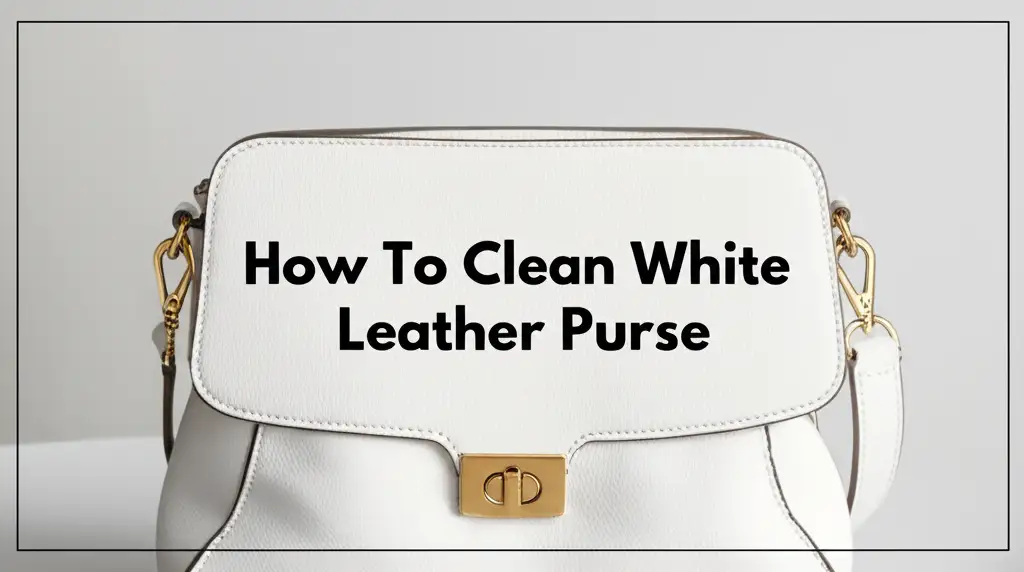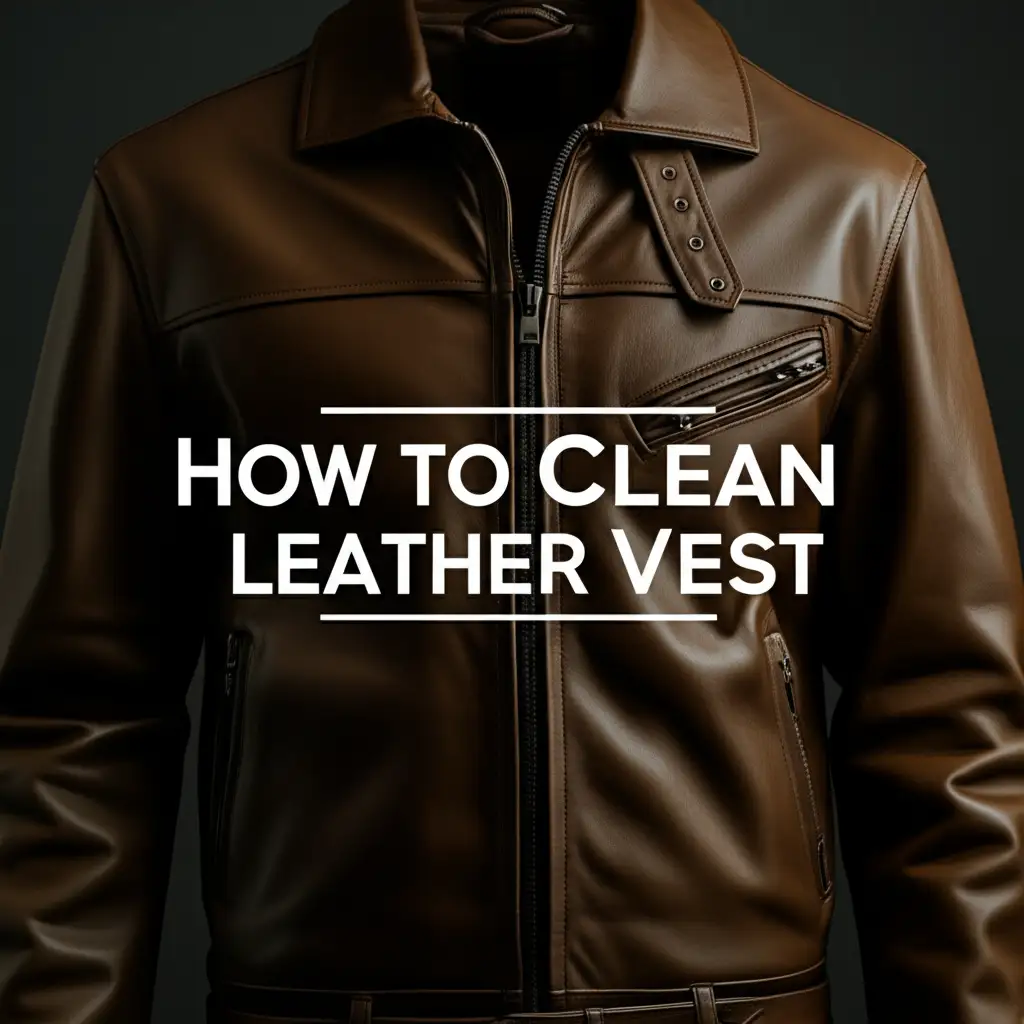· Leather Care · 14 min read
How To Clean Mold Off Leather Jacket

How to Clean Mold Off Leather Jacket: A Comprehensive Guide
Finding mold on your favorite leather jacket is certainly disappointing. Mold not only looks unsightly but also damages the leather fibers over time. It can also cause unpleasant odors and potentially impact your health. Learning how to clean mold off leather jacket material effectively helps restore your beloved garment. This guide provides clear, actionable steps to safely remove mold and prevent its return. We will discuss identifying mold, gathering supplies, cleaning methods, and crucial prevention techniques. By following these instructions, you can keep your leather jacket looking new.
Takeaway
- Assess Mold Type: Identify if it is superficial mildew or deeper black mold before cleaning.
- Gather Supplies: Collect soft cloths, mild soap, vinegar/rubbing alcohol, and leather conditioner.
- Test Cleaning Solutions: Always perform a patch test in an inconspicuous area first.
- Clean Gently: Use soft motions to avoid damaging the leather’s surface.
- Ensure Thorough Drying: Dry the jacket completely and naturally away from direct heat.
- Condition After Cleaning: Rehydrate the leather to maintain its suppleness.
- Prevent Future Growth: Store your jacket in a cool, dry, well-ventilated space.
To effectively clean mold off a leather jacket, first brush off loose mold outdoors. Then, gently wipe the affected area with a soft cloth dampened with a diluted solution of white vinegar or rubbing alcohol. Follow up by cleaning with a mild leather cleaner. Ensure the jacket dries naturally and completely before applying a leather conditioner to restore its moisture.
Understanding Mold Growth on Leather Jackets
Mold is a type of fungus that thrives in damp, dark, and poorly ventilated environments. Leather jackets are particularly susceptible to mold growth due to their organic nature. The porous surface of leather can trap moisture and dust, providing an ideal breeding ground for mold spores. When these spores land on a damp leather surface, they begin to colonize and grow, appearing as fuzzy patches.
Several factors contribute to mold developing on your leather jacket. High humidity is a primary culprit; mold needs moisture to survive and spread. Storing a damp jacket in a closet or leaving it in a humid room creates perfect conditions for growth. Lack of air circulation also plays a big role. A tightly packed closet prevents air from flowing around your jacket, allowing moisture to settle and mold to flourish.
Identifying the type of mold helps determine the best cleaning approach. Mildew often appears as a powdery, white, or gray substance on the surface. It usually has a musty smell. Black mold, conversely, looks darker, often green or black, and can penetrate deeper into the leather. Black mold suggests a more significant moisture problem and can be more challenging to remove. Early detection of mold makes the cleaning process much easier. Acting quickly prevents further damage to your jacket.
Essential Tools and Supplies for Mold Removal
Before you begin cleaning, gather all the necessary tools and supplies. Having everything ready saves time and ensures a smooth cleaning process. You need to work methodically to avoid spreading mold spores or damaging the leather. Always prioritize safety during mold removal.
First, protect yourself. Wear rubber gloves to prevent skin contact with mold spores and cleaning solutions. A dust mask is also important to avoid inhaling airborne spores. These spores can irritate your respiratory system. Next, prepare your cleaning solutions. You will need plain water, distilled white vinegar, and rubbing alcohol. These are effective and generally safe for leather.
Gather several soft, clean cloths. Microfiber cloths work well because they are absorbent and non-abrasive. You will also need a soft-bristled brush or a dry cloth to initially remove loose mold. For cleaning the leather, choose a mild soap specifically designed for leather. Alternatively, a tiny amount of mild dish soap can work if you are very careful. Finally, a high-quality leather conditioner is essential for rehydrating the jacket after cleaning. This step helps maintain the leather’s natural oils.
- Protective Gear: Rubber gloves, dust mask.
- Initial Cleaning Tools: Soft-bristled brush or dry, soft cloth.
- Cleaning Solutions:
- Distilled white vinegar
- Rubbing alcohol (isopropyl alcohol)
- Mild leather soap or gentle dish soap
- Plain water
- Application Tools: Several clean, soft microfiber cloths.
- Finishing Product: Quality leather conditioner.
Remember to test any cleaning solution on a small, inconspicuous area of your jacket first. This patch test helps ensure the solution does not discolor or damage the leather. Different leather types react differently, so this step is crucial for safety. For similar considerations with other leather items, you can learn how to clean patent leather shoes with scuff marks.
Step-by-Step Guide: Gentle Mold Removal for Leather
Removing mold from your leather jacket requires a gentle yet effective approach. Start by taking your jacket outdoors. This prevents mold spores from spreading inside your home. Gently brush off any loose, powdery mold with a soft-bristled brush or a dry cloth. Be careful not to press too hard, as this can embed spores deeper into the leather. After brushing, clean the brush thoroughly or dispose of the cloth.
Prepare a diluted vinegar solution. Mix equal parts distilled white vinegar and water in a clean bowl. White vinegar is a natural antifungal agent and helps kill mold spores. Dip a clean microfiber cloth into the solution, then wring it out until it is just damp. You do not want to oversaturate the leather. Gently wipe the moldy areas of the jacket. Work in small sections, wiping in one direction to lift the mold rather than spread it.
For tougher spots, you can use a slightly stronger solution or repeat the process. Avoid scrubbing vigorously. After cleaning the mold, use a fresh, damp cloth with plain water to wipe away any vinegar residue. This step is important to prevent vinegar from drying on the leather and potentially affecting its finish. Ensure all cleaning solution is removed from the surface. This gentle process is effective for surface mildew. Proper air drying is the next critical step.
Dealing with Stubborn Mold Stains on Leather
Sometimes, mold penetrates deeper into the leather, leaving behind stubborn stains or a persistent musty odor. For these more challenging cases, you might need a slightly stronger approach. After the initial gentle cleaning, assess if any stains remain. If so, a rubbing alcohol solution can be more effective. Alcohol acts as a disinfectant and can help break down mold residues.
Mix equal parts rubbing alcohol and water. Apply this solution sparingly to a clean cloth. Again, test on an inconspicuous area first to ensure it does not cause discoloration. Gently dab the stained areas with the alcohol solution. Avoid rubbing, as this can spread the stain or damage the leather’s finish. The alcohol will help lift the remaining mold and disinfect the area. This method is especially useful for older, embedded mold.
For very deep stains or a lingering musty smell, a dedicated leather cleaner specifically designed for mold or mildew might be necessary. Follow the product instructions carefully. Some specialized cleaners contain conditioning agents to minimize dryness. After using any stronger solution, always wipe the area with a clean, damp cloth to remove any residue. This prevents the cleaning agent from sitting on the leather and causing issues. Promptly move to the drying stage to prevent new mold growth. Cleaning mold from other difficult surfaces, like how to clean black mold off wood, shares similar principles of careful application and thorough drying.
Proper Drying and Conditioning for Leather Jackets
After cleaning, drying your leather jacket correctly is paramount. Improper drying can lead to several problems, including new mold growth or damage to the leather. Never use direct heat sources like a hairdryer, heater, or direct sunlight to dry your jacket. High heat can cause leather to shrink, crack, or become stiff and brittle. This kind of damage is often irreversible.
Instead, hang your leather jacket on a sturdy padded hanger in a cool, dry, and well-ventilated area. An open room with good air circulation is ideal. Ensure there is enough space around the jacket for air to flow freely. If possible, open a window to enhance ventilation. Allow the jacket to air dry completely. This process can take 24 to 48 hours, or even longer depending on humidity levels and how wet the jacket became. It is crucial for the leather to be bone dry before you move to the next step.
Once the jacket is completely dry, it is time to condition the leather. Cleaning, especially with alcohol or vinegar, can strip the leather of its natural oils. Conditioning restores moisture and suppleness, preventing the leather from becoming stiff or cracking. Apply a high-quality leather conditioner according to the product’s instructions. Use a clean, soft cloth and rub the conditioner into the leather in small, circular motions. Work it into all areas of the jacket. Let the conditioner absorb for the recommended time, then buff off any excess with a clean cloth. Conditioning your jacket regularly, even without mold issues, helps maintain its longevity. Just as you might regularly maintain white leather to prevent yellowing, as seen in how to clean white leather that has yellowed, routine conditioning is vital for dark leather too.
Preventing Future Mold Growth on Your Leather Jacket
Preventing mold from returning is just as important as cleaning it. Mold thrives in specific conditions, so controlling these factors helps protect your leather jacket. The key is to manage moisture and ensure good air circulation. These two elements are critical for keeping mold at bay.
First, always ensure your leather jacket is completely dry before storing it. If you wear it in the rain or damp weather, hang it up immediately to air dry. Do not put it away wet or even damp. Storing a damp jacket in a closet creates a perfect breeding ground for mold spores. Allow it to air out for several hours, or even a full day, after wearing it in humid conditions.
Second, consider your storage environment. Store your leather jacket in a cool, dry place. Avoid basements, attics, or garages, which often experience high humidity fluctuations. A climate-controlled closet is ideal. If your closet is prone to dampness, use moisture absorbers or desiccant packets. These products help pull excess moisture from the air, reducing the humidity levels. Do not store your jacket in a plastic garment bag for long periods. Plastic traps moisture and prevents air circulation, which invites mold. Instead, use a breathable garment bag made of cotton or fabric. This protects the jacket from dust while allowing it to breathe. Air circulation is vital for preventing mold on various surfaces, a concept also seen when learning how to clean mold around air vents.
Third, provide adequate air circulation. Do not overcrowd your closet. Leave space between garments to allow air to circulate freely around your leather jacket. This prevents moisture from settling and creating damp spots. Periodically take your jacket out of the closet and air it out for a few hours. This simple practice helps refresh the leather and keeps mold spores from settling. Regular inspection is also a good habit. Check your jacket for any signs of mold growth, especially if you live in a humid climate. Early detection makes any necessary cleaning much easier. Keeping clothes exposed to mold spores separate is also important for preventing further spread, similar to best practices for how to clean clothes exposed to mold spores.
When to Seek Professional Leather Cleaning Help
While many mold issues on leather jackets can be handled at home, there are situations where professional help is the best course of action. Knowing when to call in experts can save your jacket from permanent damage. Sometimes, the mold infestation is simply too severe or complex for DIY methods.
One major reason to seek professional help is when the mold growth is extensive. If a large portion of your jacket is covered in thick, pervasive mold, attempting to clean it yourself might be overwhelming. Professionals have specialized equipment and stronger, yet safer, chemicals to handle such large-scale infestations. They can effectively remove mold without causing further damage to the leather.
Another sign to call a professional is when you suspect the mold has deeply penetrated the leather. If the mold looks like it is ingrained or has left deep stains after your initial cleaning attempts, it is likely more than just a surface issue. Deep-seated mold can be difficult to remove without proper techniques and solutions. It can also weaken the leather fibers, requiring specific restoration methods. Additionally, if the musty odor persists even after thorough cleaning and drying, it indicates that mold spores might still be present within the leather. Professionals can use deodorizing treatments to eliminate these lingering smells.
Finally, consider professional help if your leather jacket is particularly valuable or delicate. Expensive designer jackets or vintage leather items require a delicate touch. A professional leather cleaner understands different leather types and their specific needs. They can assess the damage and choose the most appropriate and safest cleaning and restoration methods. Trying to clean a delicate or valuable item yourself could inadvertently cause irreparable damage. Professional cleaning can ensure the jacket’s longevity and preserve its aesthetic appeal.
FAQ Section
Q1: Can mold permanently damage a leather jacket? A1: Yes, mold can cause permanent damage if left untreated. It can weaken leather fibers, cause discoloration, and leave lasting stains. Mold also produces a persistent musty odor. Regular checks and prompt cleaning can help prevent such severe damage. Early removal is always best.
Q2: Is it safe to use bleach on a leather jacket to remove mold? A2: No, never use bleach on a leather jacket. Bleach is too harsh for leather. It can severely dry out, discolor, and degrade the material. This will cause cracking and irreparable damage. Stick to mild, leather-safe cleaning solutions like diluted vinegar or rubbing alcohol.
Q3: How often should I condition my leather jacket after cleaning mold? A3: After cleaning mold, condition your leather jacket immediately and thoroughly. Then, aim to condition it every 3-6 months. This regular conditioning helps restore moisture and keep the leather supple. It also creates a barrier against future mold growth.
Q4: What if my leather jacket still smells musty after cleaning? A4: A lingering musty smell indicates mold spores may still be present or deeply embedded. Try airing the jacket out in a well-ventilated area for several days. If the smell persists, you might need to repeat the cleaning process or seek professional leather cleaning services. They have specialized deodorizing treatments.
Q5: Can I machine wash my leather jacket to remove mold? A5: No, machine washing is not recommended for leather jackets. Washing machines can damage the leather, causing it to shrink, crack, or lose its shape. Always clean leather jackets by hand using the methods described in this guide.
Q6: How can I prevent mold on my leather jacket during humid seasons? A6: During humid seasons, store your jacket in a cool, dry, well-ventilated space. Use a breathable garment bag instead of plastic. Consider placing moisture absorbers in your closet. Ensure the jacket is always completely dry before storage.
Conclusion
Discovering mold on your cherished leather jacket is a common problem, but thankfully, it is often fixable. We discussed various methods on how to clean mold off leather jacket materials, starting from gentle brushing to using vinegar and alcohol solutions for more stubborn stains. The process involves careful cleaning, thorough drying, and essential conditioning to restore your jacket’s look and feel. Remember, preventing future mold growth is as crucial as the cleaning itself. By maintaining proper storage conditions, ensuring good air circulation, and regularly checking your jacket, you can keep mold at bay.
Always prioritize safety by wearing gloves and a mask during cleaning. Test all cleaning solutions on an inconspicuous area first. If the mold is extensive or deeply embedded, or if your jacket is very valuable, do not hesitate to seek professional leather cleaning help. Your leather jacket is an investment, and with proper care, it can last for many years. Take action today to protect and preserve your favorite piece of apparel.




